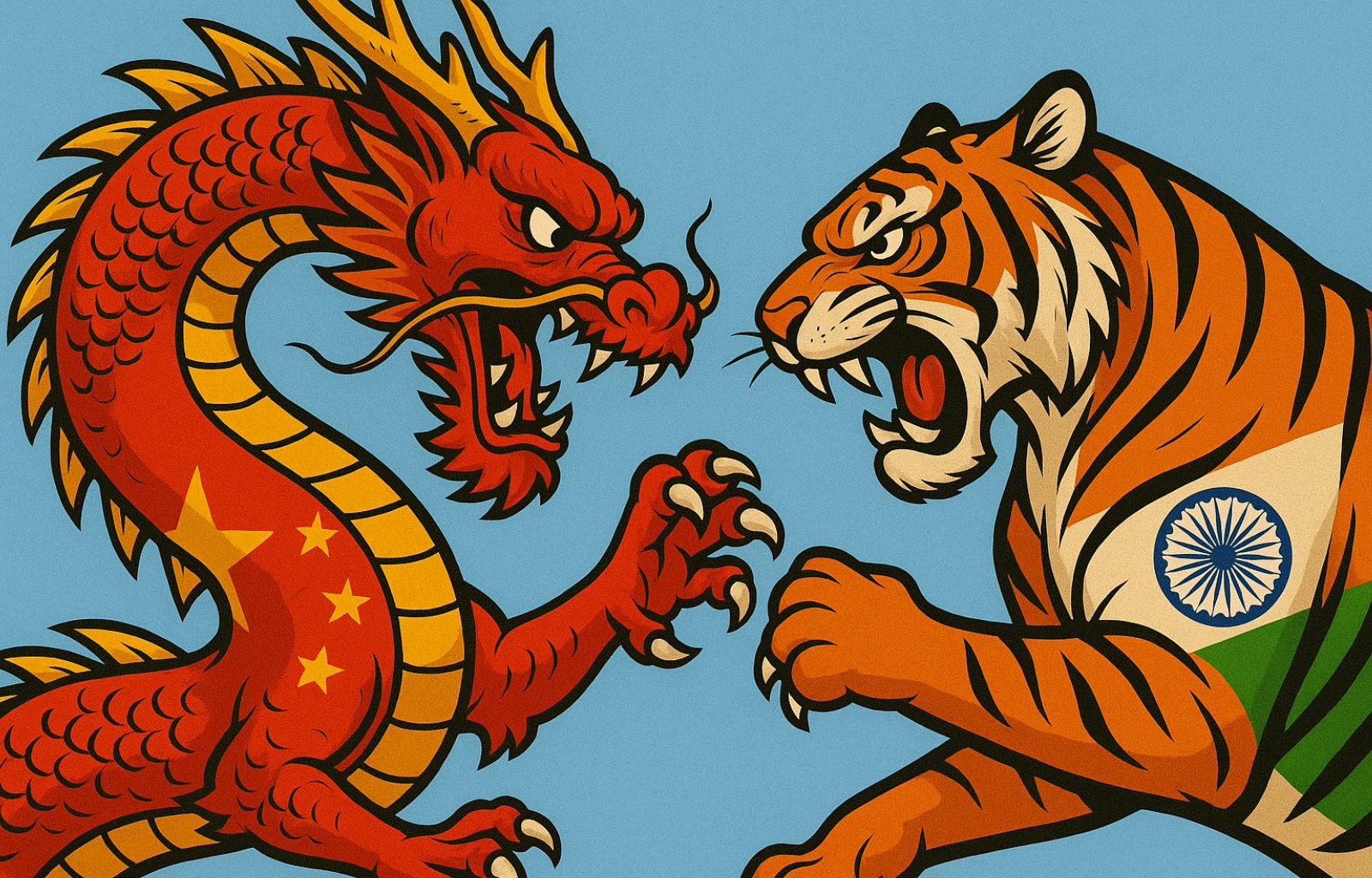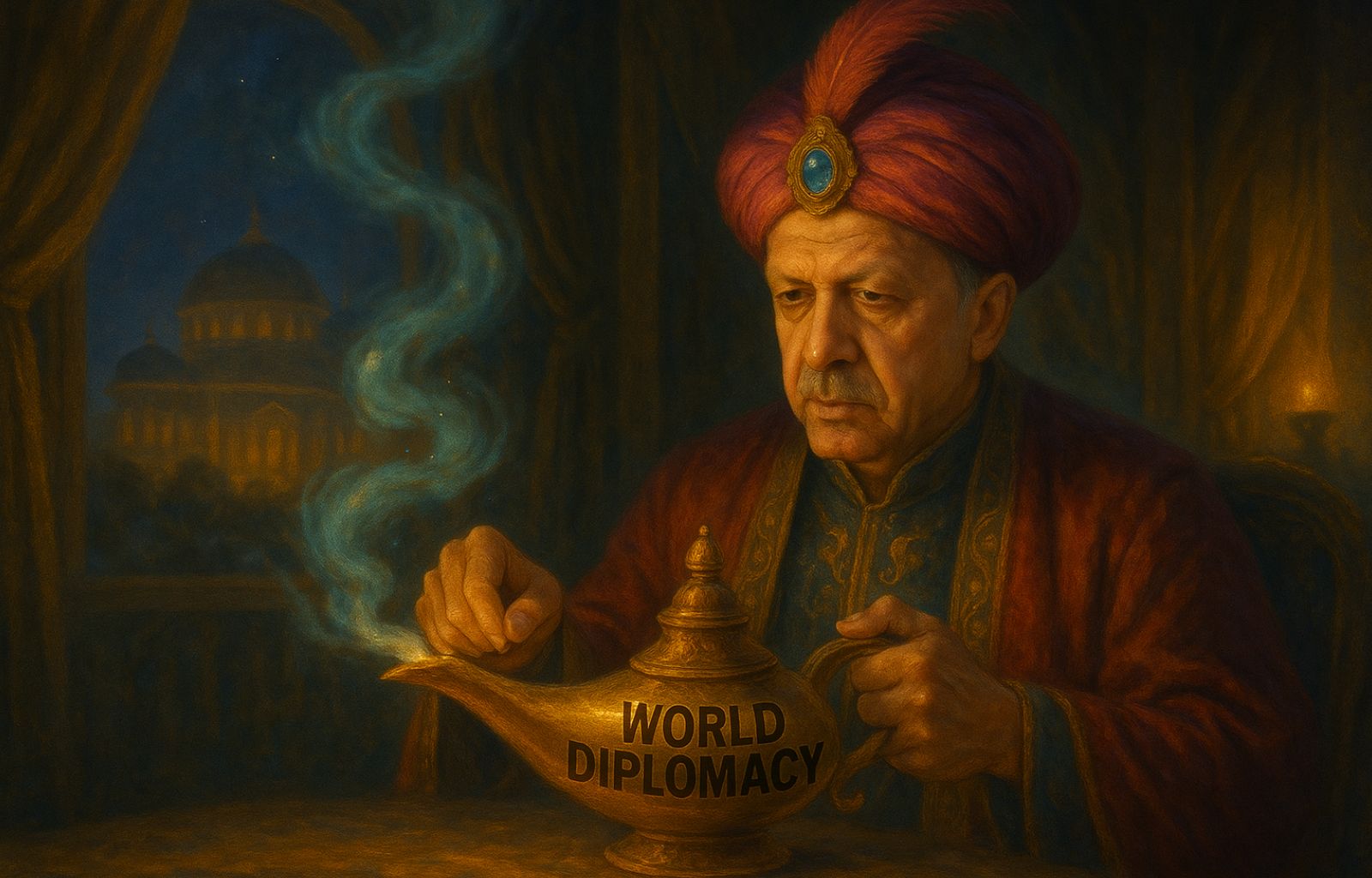Understanding the two giants: China and India divergent mirrors of Asian power

In the multipolar world of the 21st century, theIndo-Pacific axis has been transformed from a simple geo-economic horizon into the beating heart of global tensions. In this scenario, China and India occupy antithetical but inevitably complementary positions: the former presents itself as a structured power, aiming to reshape the international order in a sinocentric key; the latter as a demographic superpower under construction, uncertain between regional ambition and global ambition.
Both claim a leading role, but do so with profoundly different approaches: China acts as a system, ambitious and orderly; India moves as a fluid actor, oscillating between cooperation and sovereignty, between identity claim and structural uncertainty.
Where Beijing proposes models and infrastructure, New Delhi seeks alliances and visibility. Where China aims to rewrite the rules, India still seeks a seat at the table.
This confrontation – economic, political, symbolic – does not only concern Asia, but directly questions the West. Because if Washington sees Beijing as its real systemic rival, Europe is faced with a strategic dilemma: what role to play in this unstable equilibrium? To lean blindly on the United States or to build its own trajectory between the two emerging powers?
In this game, communication is not a detail but a lever of power. China projects itself as global architecture; India looks in the mirror and narrates its own rise as destiny. Understanding these differences is not only useful: it is necessary to orient oneself in a geopolitics increasingly made of words, images and competing narratives.
China, the power that claims to be seen
China is today the only non-Western power to have a coherent, long-term and globally articulated strategic vision. The People’s Republic proposes itself as a systemic alternative to the United States not only because of its economic capacity or military might, but because of its ability to structure alliances, rules, infrastructures and narratives parallel to those of the West. Its influence is no longer that of an emerging power: it is an established power acting as the architrave of a different order.
Economically, China remains the world’s second largest economy in terms of nominal GDP, but has already surpassed the US in purchasing power parity (PPP). Figures for 2024 show a slowed but steady growth of around 4.6%, accompanied by an expansion of high-tech exports and the consolidation of the renminbi in international payment systems (with a 2.3% growth in global trade usage, according to SWIFT data). Trade tensions with Washington accelerated the process of technological autarky, with massive state investments in semiconductors, artificial intelligence and the defence industry.

Beijing aims to reinforce its role as an alternative financial and trade hub to New York and London, exploiting the BRICS+ partnership and the logistical connections built through the Belt and Road Initiative, which has now entered its ‘phase 2.0’ that favours less infrastructural and more strategic arrangements, such as support for local currencies and digital payments between countries of the global South.
At the diplomatic level, China presents itself as a rational stabiliser in a fragmented world. It does not present itself as a ‘third-party mediator’, but as an ordering power. This is demonstrated by the separate understandings with Saudi Arabia and Iran, the ambiguous but steady approach on the Russian-Ukrainian dossier, and the growing influence in Africa and Latin America, where Beijing has overtaken the EU in the number of bilateral agreements signed in 2023-2024.
Militarily, the increase in the defence budget – which grew by 7.2% in 2025 – goes hand in hand with naval projection and enhanced cyber capabilities. But China’s real leverage is economic interdependence, which it methodically uses to gain political concessions, divide allies and inhibit sanctions.
China is not just an international player: it is an expanding system that challenges the very idea of a liberal order. Its limitation? A growing distrust of transparency and true multilateral cooperation. While it manages to build alliances to the exclusion of others, it is not yet able to attract widespread consensus, especially in the democratic sphere. Its soft power remains limited, and its internal authoritarian management – between digital surveillance and repression of dissent – undermines its moral credibility, making any proposal for shared governance fragile.
India as an unfinished power
India, with more than 1.4 billion inhabitants, is now the most populous country in the world and the fifth largest global economy by nominal GDP. Yet, the gap between its critical mass and its geopolitical influence remains clear. Delhi aspires to a role as a major regional power with global projection, but infrastructural limitations, industrial weakness and internal fragmentation continue to hinder its trajectory.
The Indian economy maintained a growth rate of more than 6 % in 2024, led by the service sector and the export of IT services. However, more than 90% of the labour force is employed in the informal sector, which is characterised by low productivity, poor social protection and very high vulnerability to external shocks. Manufacturing – which the Modi government has tried to revive with the ‘Make in India’ plan – is struggling to take off, mainly due to a lack of adequate infrastructure, systemic corruption and regulatory uncertainty.
In the strategic arena, India has strengthened ties with the United States (especially under the Trump administration), both to counter China’s growing assertiveness and to diversify its sources of energy and technology supplies. However, it continues to maintain an ambiguous posture in major global scenarios, as evidenced by its neutrality on the war in Ukraine and historical reluctance to openly take sides in multilateral fora.
Indian diplomacy, however active, is still mostly reactive and opportunistic. It moves well in the balance of power (see participation in the Quad, the BRICS and the Shanghai Cooperation Organisation), but is rarely a promoter of international architectures. The rhetoric of the ‘Global South’ is often more a symbolic claim than a coherent policy.
In the military sphere, India boasts an impressive army and an autonomous nuclear programme, but suffers from chronic logistical inefficiency and an obsolete defence apparatus, as demonstrated by its lacklustre handling of crises with China along the Line of Actual Control or with Pakistan in Kashmir. Its military strength is deterrent on a regional level, but still not credible on a global scale.
Finally, from an institutional perspective, the authoritarian drift of the Modi government – marked by attacks on the press, restrictions on academic freedom and marginalisation of minorities – limits India’s appeal as a democratic leader, despite its claims to lead the alternative front to the West. India is a complex, fragmented and transforming country. It has enormous potential, but also a systemic fragility that prevents it, for now, from presenting itself as a real alternative to the hegemonic powers.
China-India: comparing communication
In the confrontation between China and India, communication becomes a litmus test of their respective visions of power. It is not just a matter of media strategies, but of governance models, political culture and geopolitical projection. The two Asian powers speak different languages, not only in form but in function: China to assert an order, India to construct an identity.
Contemporary China does not communicate: it orchestrates. Its is an integrated state communication, where the message is never isolated but always inscribed in an overall, disciplined, symbolic choreography. From the Communist Party leadership to the local apparatuses, via the state agencies (Xinhua, CGTN), Chinese communication is a closed, highly centralised system that aims to project strength, stability and inevitability. There is no improvisation, no fragmentation.
Internally, the dominant message is that of the ‘Chinese dream’ (Zhongguo Meng), a vision of collective prosperity under the leadership of the Party. The individual is narratively secondary: the protagonist is the nation, understood as an organic community. Dissent is represented as disorder or betrayal. There is no room for plurality of visions: only varying degrees of adherence.
Outwardly, China adopts a two-faced diplomatic narrative: peaceful but assertive, friendly but guarded. The lexicon of ‘win-win cooperation’, ‘new silk routes’, and ‘mutual respect’ conceals a form of low-intensity hegemony, exercised through contracts, infrastructure and commercial presence. The ‘neutrality’ is strategic: it allows China to appear as a non-colonial power, an alternative to American unilateralism, but behind this façade moves an impressive propaganda apparatus, more seductive than persuasive, which does not seek empathy, but acquiescence.
Chinese communication does not want to generate debate, but to shape the information environment. It is based on repetition, on the aesthetics of order, on the gaze of stability. It wants to be admired, but not discussed. And it is precisely this aesthetic of incontestability that represents both its strength and its limitation today: powerful in contexts where form is substance, fragile where legitimacy comes through open confrontation.
India, on the contrary, does not orchestrate: it amplifies. It is the country where noise is an integral part of political communication, and where the absence of a coordinating centre generates a plurality of voices that intertwine, overlap and contradict each other. But behind this apparent disorder, the Modi government has constructed a highly ideologised, nationalist, techno-populist and visually seductive narrative.
The public narrative of India is centred on the ‘New India’: modern, powerful, digital, spiritual and ‘post-colonial’. Modi is the face of this narrative: ubiquitous, mediatised, the protagonist of a direct, hyper-personalised communication of slogans, emotional appeals and politically reinterpreted religious symbols. Civic Hinduism’ becomes a rhetorical vehicle of national unity, at the cost of marginalising minorities, dissidents and critical voices.

Indian soft power – traditionally founded on diaspora, Bollywood, yoga and spirituality – has been absorbed into the communicative nationalism of the BJP, which has hybridised tradition and digital marketing, creating a communication machine that mixes propaganda and influencers, mythology and political storytelling. But it is a communication that speaks mainly to the ‘self’: inward-looking, self-referential, more obsessed with perception than reality.
In the international context, India appears less coherent: it alternates between globalist openings and sovereignist appeals, the language of a moderating power and the postures of a victim of the system. The external image is built more by suggestion than by coherence, and if it works it is because the global system desperately seeks an alternative to China. But Indian diplomatic communication is not yet able to bear the weight of its own ambitions: it does not control the narrative, it suffers it.
Its fragility lies here: too ‘alive’ to be credible as an ordering power, too divided to impose itself as a symbolic hegemon. While China imposes a global grammar of force, India offers a dispersed lexicon of ambition. Both use communication as an instrument of power, but with one major difference: China communicates to deter, India to exist.
The two different power architectures
In the comparison between China and India, two profoundly different models of power under construction emerge. On the one hand, China: a systemic actor with a structured idea of its global role, endowed with a vision, a coherent diplomatic, economic and narrative arsenal, and above all capable of articulating its international presence in recognisable, disciplined, often persuasive forms.
China not only knows where it wants to go, it has also started to write the rules of the game. And it is precisely this strategic clarity that makes it a communicating power: its diplomacy speaks, its economy writes, its symbolic apparatus – from soft power to the language of multilateral summits – acts in a coordinated manner. It is a superpower that not only seeks to be heard: it wants to be understood, accepted, feared.
China is not moving in chaos, but in an alternative international order that it has been methodically building for more than a decade. Through the Belt and Road Initiative, the Asian Infrastructure Investment Bank and the new Asian multilateral platforms, Beijing proposes a model that challenges Western universalism without the need for ideological proclamations: it offers infrastructure, connections, investments. More than alliances, it builds strategic dependencies. Its tactical alignment with Russia, its growing proximity to Iran, its asymmetrical relations with sub-Saharan Africa and Latin America are all pieces of a coherent mosaic. China wants to be at the centre of a new world order. And it acts, communicates, negotiates precisely in this direction.
On the other side, India. A democracy in turmoil, a growing economy, an impressive critical mass. But still a potential power, not systemic: without doctrine, without a recognisable design, without a stable narrative. India today has not yet decided what it wants to become. It oscillates between being the Asian pillar of the West and the defender of a plural global South, but without ever fully assuming either role. In fact, it does not dictate the rules of the game because it has not yet internalised them, nor has it ever really wanted to subvert them. It moves according to immediate convenience: it has moved closer to Russia despite the war in Ukraine, strengthened relations with Israel while calling for the decolonisation of the world, and participates in the Quad without abandoning the SCO. It is a fickle diplomacy, made up more of reactive posturing than proactive visions.

Precisely because of this, its status as an emerging power remains suspended. India communicates only at times, and often more by reflex than by strategy: it does not systematise, it does not build an exportable model, it does not establish narrative frames of its own. It acts as a great ally, not as a leader. It is more comfortable in the number two position of the hegemonic power than in the responsibility to act as an autonomous actor. It makes noise, but it does not steer.
In a world increasingly defined by its ability to communicate power, China is moving forward with consistency and intention. India is waiting to figure out which side it is really on. And until this ambivalence is dissolved, the gap between volume and vision – between declared power and real power – will continue to define the great strategic divide between the two Asian giants.












